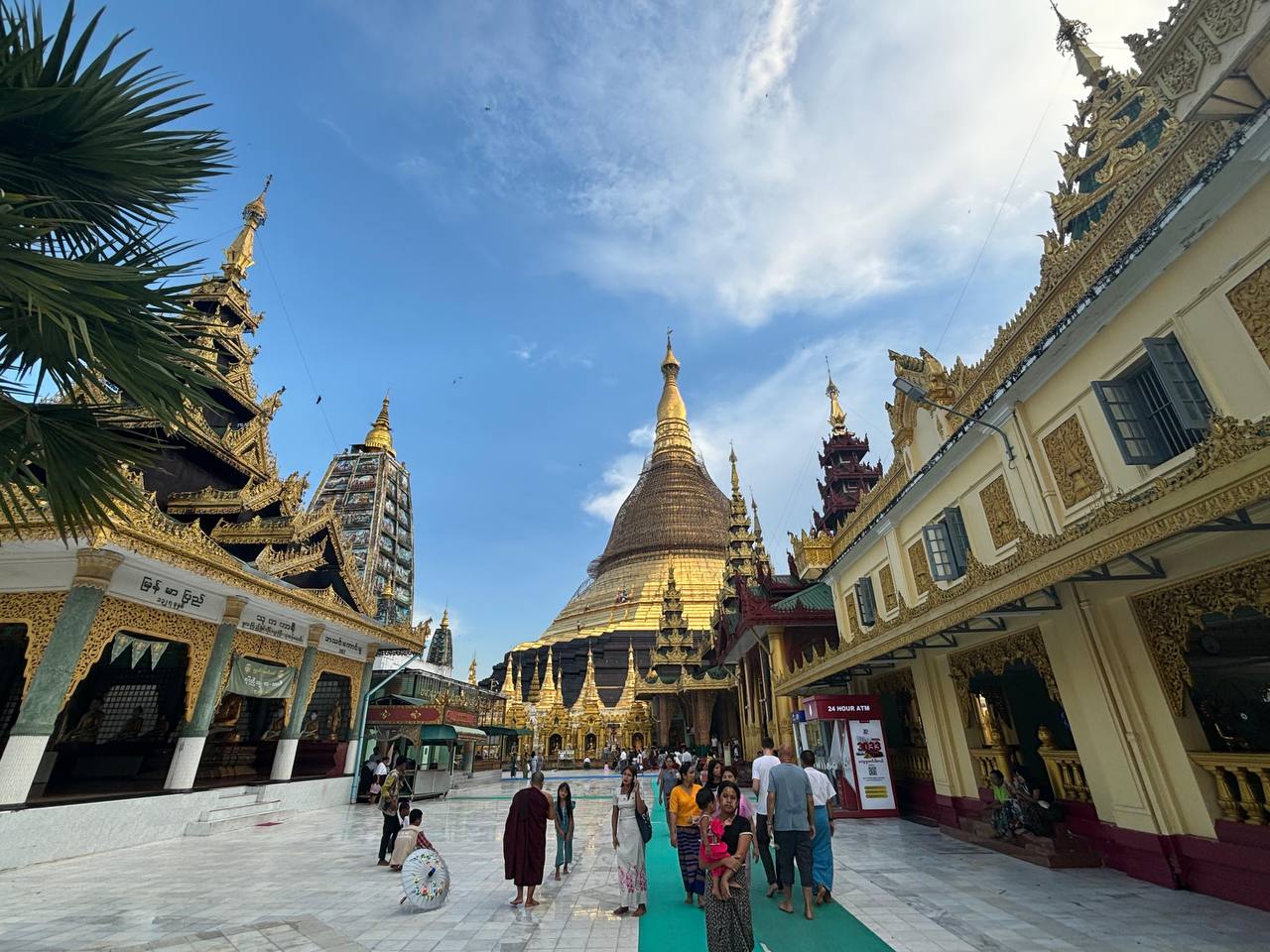The Shwedagon Pagoda is undoubtedly the most iconic landmark in Myanmar and a must-visit for anyone traveling to Yangon. Standing at an impressive 99 meters tall, this golden stupa is not just a sight to behold; it is a vital part of the country’s cultural and spiritual identity.
Whether you’re a history buff, a photography enthusiast, or just someone who enjoys exploring new cultures, the Shwedagon has something to offer.
To read about street food in Yangon click here.
Table of Contents
Historical Significance of Shwedagon Pagoda
The history of Shwedagon Pagoda dates back over 2,500 years, making it one of the oldest pagodas in the world. According to local legend, it was built to house relics of the Buddha, which were brought to Myanmar by two merchant brothers. The pagoda has undergone numerous renovations and expansions over the centuries, each adding layers of significance and beauty to the structure we see today.
Visitors can find a variety of architectural styles, which reflect the different periods of its construction and renovation. The golden stupa itself is covered in gold leaf, glinting in the sun and standing as a symbol of Myanmar’s spiritual heritage.
To read about the Circular Railway click here.

What to Expect When You Visit Shwedagon Pagoda
As you approach the Shwedagon Pagoda, you’ll notice the bustling atmosphere around the site. Locals and tourists alike congregate to pay their respects, meditate, or simply take in the grandeur of the place. The pagoda complex is expansive, with numerous smaller shrines, statues, and colorful mosaics lining the pathways.
One of the first things to do upon arrival is to walk around the base of the pagoda. This provides an excellent opportunity to observe the intricate carvings and the various altars dedicated to different deities. As you walk, you’ll see worshippers lighting candles and incense, and you may even catch a glimpse of traditional Buddhist ceremonies.
To read about School Girls bar click here.



Tips for Your Visit
Timing your visit to the Shwedagon Pagoda can greatly enhance your experience. Early mornings or late afternoons are ideal, as the temperatures are milder and the lighting is perfect for photography. The pagoda opens at 4:00 AM, making it possible to witness the stunning sunrise illuminating the stupa.
Keep in mind that there is a small entrance fee for foreign visitors, and it’s essential to dress modestly—covering your shoulders and knees—as a sign of respect. It’s also advisable to remove your shoes before entering the sacred areas, as is customary in many Buddhist sites.
To read about the troubles in Burma click here.
Exploring the Surroundings of Shwedagon Pagoda
After soaking in the sights of the pagoda, take some time to explore the surrounding area. The neighborhood around the Shwedagon is filled with street food stalls offering local delights. Grab some Mohinga, a traditional fish soup that is a breakfast staple, or try some Samosas or Pancakes from one of the vendors.
The streets around the pagoda also feature small shops selling handicrafts, textiles, and religious artifacts. This is a great way to pick up souvenirs that reflect Myanmar’s rich culture and craftsmanship.



Cultural Context
Understanding the cultural significance of the Shwedagon Pagoda can greatly enhance your visit. For many locals, this site is not just a tourist attraction but a sacred space where they connect with their faith. The pagoda plays a pivotal role in community events and religious festivals, making it a living part of the city’s cultural fabric.
Many travelers report feeling a strong sense of spirituality when visiting the pagoda, even if they are not particularly religious. The serene atmosphere and the devotion of the local people can be quite moving.
For those interested in travel to Myanmar check out the tours from travel agency Young Pioneer Tours.

